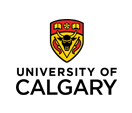Todd Christopher Sutherland
Currently Teaching
| | W2024 - CHEM 353 - Organic Chemistry II | | |
|
| | LEC 2 | MWF 09:00 - 09:50
| | | | Outline | | Notes: Students in the honours or major programs in Chemistry, Applied Chemistry, or Chemical Physics can take this course in lieu of CHEM 355. Students are advised to take CHEM 351 and 353 in consecutive sessions. Students who have taken CHEM 353 here at the University of Calgary in the last two years and earned 75% or more on the laboratory component can opt not to repeat the laboratory and reuse their previous laboratory course mark. Those students should register in lab section B99 and contact the Chemistry Department Undergraduate Program coordinator in SA229 (email chem.undergrad@ucalgary.ca) to complete the laboratory opt out process as soon as possible. | |
| | W2024 - CHEM 502B.1 - Research In Chemistry (Research In Chemistry I) | | |
| |
| | F2024 - CHEM 453 - Advanced Organic Chemistry | | |
|
| | LEC 1 | MWF 13:00 - 13:50
| | | | | | Notes: Registration in CHEM 453 is initially restricted to Chemistry majors or honors and Applied Chemistry majors or honors. | |
Research Interests
Our laboratory studies supramolecular assemblies at interfaces and the research lies in both of organic and physical chemistry areas. Nature uses supramolecular chemistry to carry out most operations essential to life, such as membrane transport, photosynthesis and respiration, to name a few. Our research group investigates a supramolecular approach to developing complex, functional surface structures reminiscent of biological photosynthesis that can be integrated into conventional circuit design methods. The long-term goal of these studies is to build photovoltaic devices that efficiently convert light energy to electrical energy. Our lab synthesizes a variety of porphyrin and quinone derivatives that self-assemble into discrete dimeric, trimeric or oligomeric structures using strong, multi-contact H-bonds. Using complementary H-bonding units that are tethered to electrodes the electrochemical and photochemical properties of the supramolecular surface structures are investigated. A concurrent research theme is the study of the lipid bilayer membrane and its role in organizing the supramolecular assemblies on electrode surfaces. The membrane research involves the synthesis of a library of lipids and their associated supramolecular properties investigated using supported lipid bilayers to probe the charge-transfer properties of H-bonded redox- and photo-active functional units as artificial photosynthesis candidates.
Fundamentally, the chromophore surface orientation, position and charge transport properties are interrogated using photo- and electro-chemical techniques, such as surface UV-vis, surface IR, surface plasmon resonance and impedance spectroscopy.


